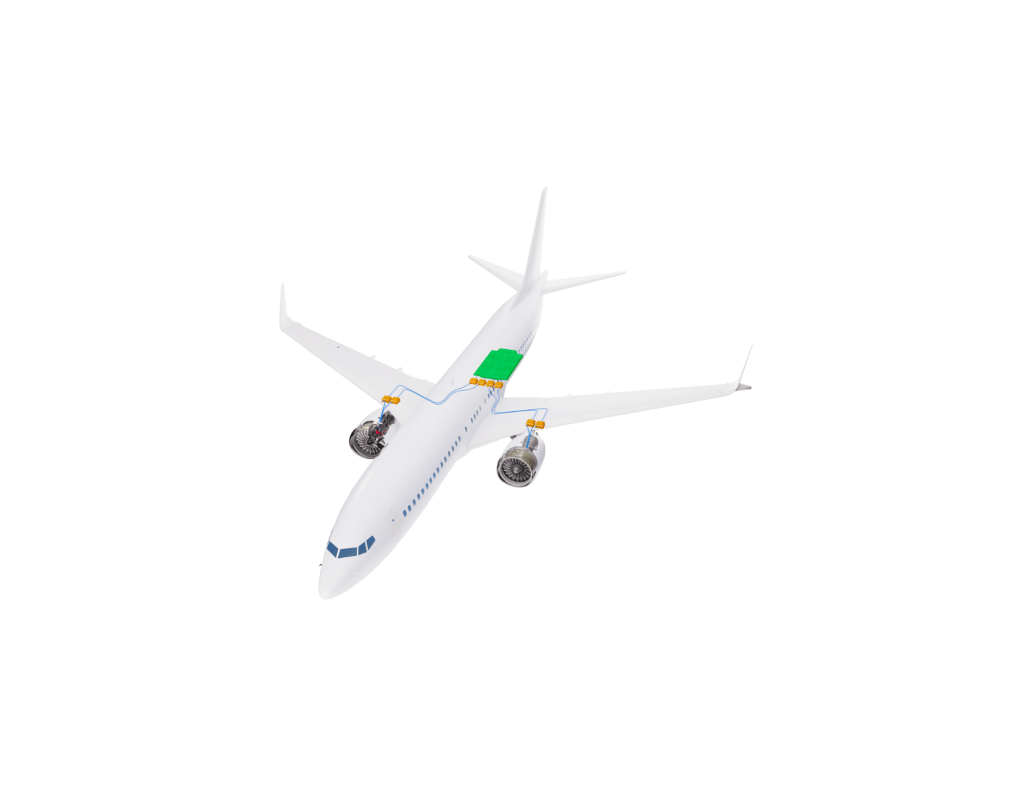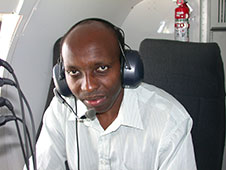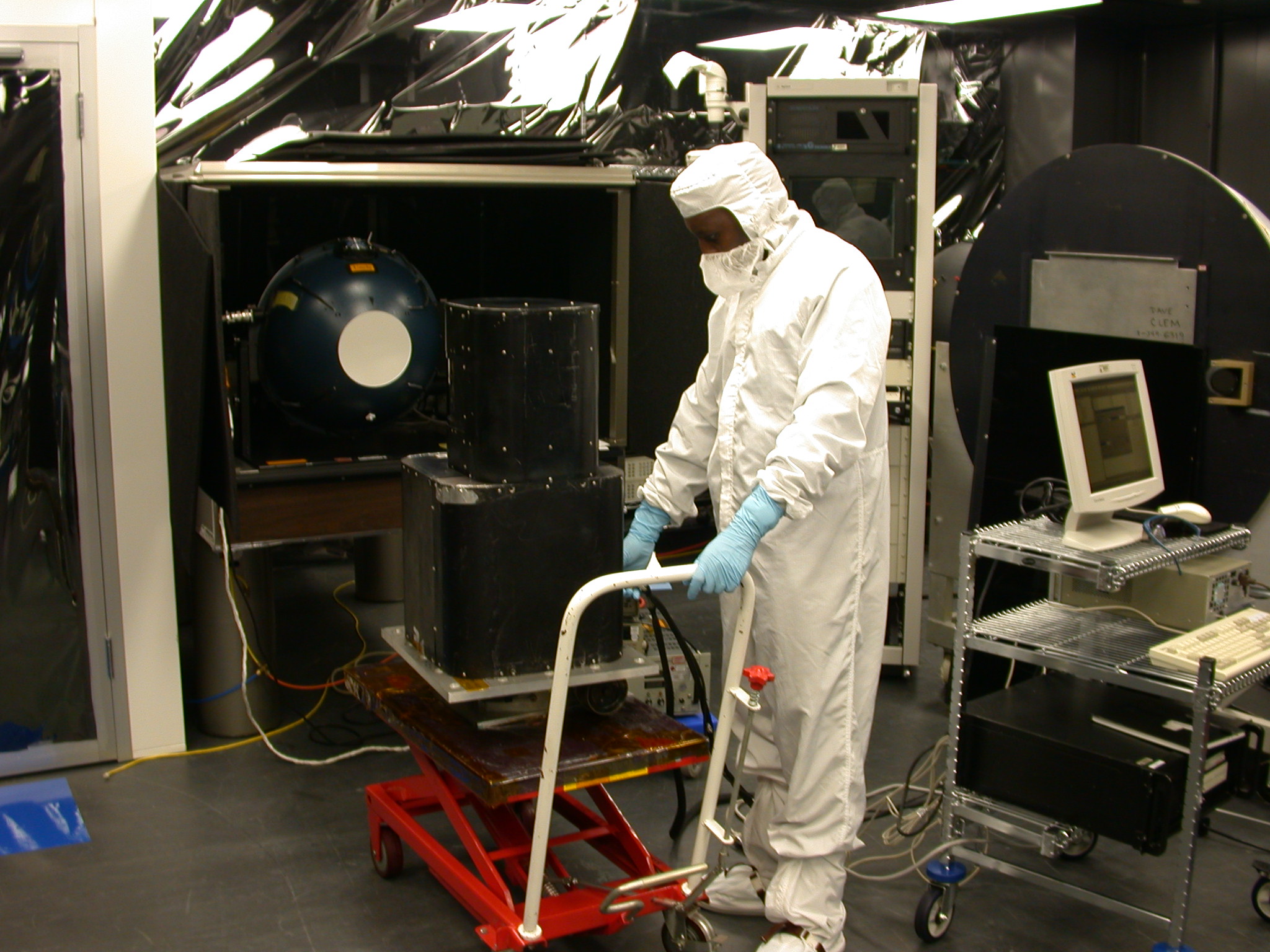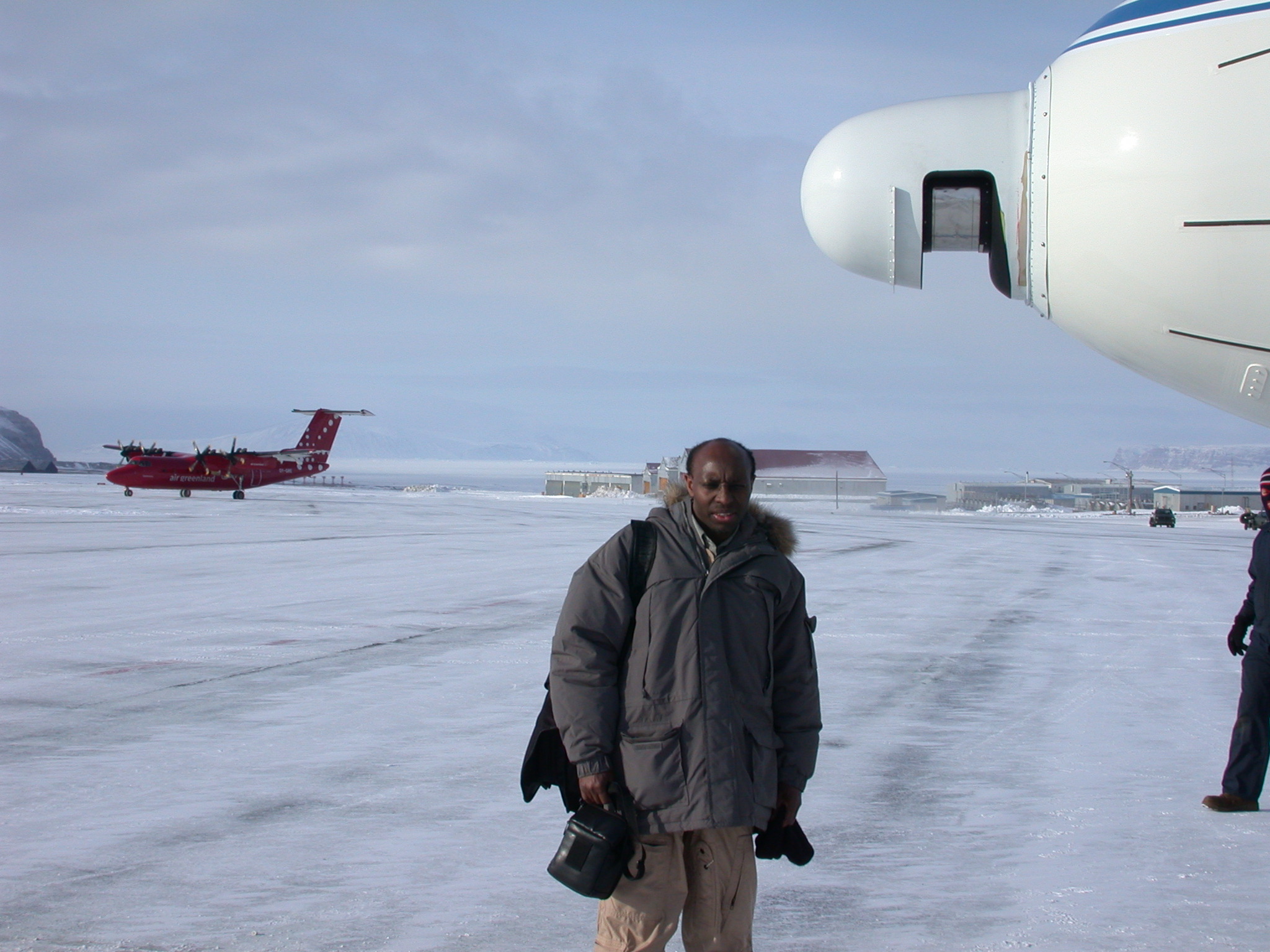Name: Charles K. Gatebe
Title: Research scientist
Organization: Code 613, Climate and Radiation Laboratory, Earth Sciences Division, Earth Sciences Directorate
Climate scientist Charles K. Gatebe always pushes the limits and encourages others to be as curious.
What do you do and what is most interesting about your role here at Goddard? How do you help support Goddard’s mission?
I’m a climate scientist. I study reflected sunlight to improve our understanding of the composition of the atmosphere and surface properties, including land and ocean, and impact on Earth’s radiation budget and climate. I conduct elaborate airborne experiments in different places in the world and use data from these experiments to validate information from satellites.
Why is it important to measure reflected sunlight?
Sunlight is sensitive to the changing composition of the atmosphere, including its greenhouse gases and aerosol content, cloud and surface properties. We study the reflected sunlight to monitor changes in the atmospheric composition, plant life, vegetation over land and in marine ecosystems.
How did you become interested in studying climate?
I was born and raised in central Kenya, in the same area as Wangari Maathai, who won the Nobel Peace Prize in 2004 for “her contribution to sustainable development, democracy and peace.” I grew up in a thatched hut in a village owned by a coffee farmer. I come from humble beginnings.
Our village is on a plateau about 6,000 feet above sea level. When I woke up, I saw Mt. Kenya, which, at more than 17,000 feet, is the second-highest mountain in Africa. I am a member of the Kenyan Kikuyu tribe. In our mythology, our God lives in the sky or in the clouds, but when he comes down to Earth, he rests on top of Mt. Kenya. Although Kenya is in the tropics, the top of Mt. Kenya has a snow and ice cap. The mysteries of the mountain are embedded in our culture.
I was educated in Kenya and in South Africa. When I first went to college at the University of Nairobi, Kenya, I was shocked that even on a sunny day, the sky was tinted gray, not blue. I wanted to know why the color of the sky had changed. So I became interested in air pollution and climate. I got a bachelor’s concentrating in meteorology, mathematics and physics, and then a masters in meteorology also from the University of Nairobi. I did some of the early work on air pollution monitoring in Kenya using hand-held air samplers. Then I got a doctorate in atmospheric physics from The University of Witwatersrand in South Africa. My doctorate work established the first climatology of air pollution corridors in eastern Africa.
What brought you to Goddard?
In 1998, NASA wanted to validate the information from their satellites. I was just finishing my doctorate at that time and met Dr. Michael King, who was the Earth Observing System project scientist. Dr. King invited me to work at Goddard to help prepare for a field campaign in southern Africa. I came to Goddard in 1999. The following year, NASA began the Southern African Regional Science Initiative-2000 airborne field campaign in southern Africa. I operated NASA’s Cloud Absorption Radiometer on the University of Washington’s CV-580 aircraft. I took reflectance measurements over various types of surfaces such as savanna, clouds, salt pans, ocean and smoke from biomass burning for satellite validation.
How has your research evolved?
The platforms and instruments for our measurements have greatly improved. When I first started studying air pollution and climate in college, I would physically go to different areas and take measurements from the ground using hand-held instruments. It took me a long time. I realized that I was only getting samples from very near the ground, so I decided to take some samples from a mountain. I went to Mt. Kenya and took measurements using battery operated instruments at 14,500 feet, which represented air from a much larger area transported by different air masses.
Once I joined NASA, we were able to use an aircraft as our platform and sensors that detect and measure the radiation reflected or backscattered from a remote target. Our measurements of pollution represented a much wider area. It was very important to us to cover a lot of area and height to get the biggest and most representative picture.
Eventually, it became important for NASA to validate the data coming from the Earth observing satellites. So the satellites became our next platform and covered the entire Earth. My role was helping to make sure that the information from the satellites was accurate so that other scientists could then use that information to improve weather and climate models.
What was one of your most memorable field campaigns?
In 2008, we were involved in the Arctic Research of the Composition of the Troposphere field campaign in Alaska, Canada and Greenland. We studied emissions coming from wildfires. The plumes carried the smoke and soot. Our platform was an airplane. Our instrument measured the radiation inside the smoke plumes. I didn’t realize that these large plumes are so very, very dark. There we were, flying through plumes that you couldn’t see through, knowing that the fires were not that far below us. No one had ever done that before. As a scientist, I wanted to find out what was happening.
All of a sudden, I thought that our instrument had died. It turned out that there was very low radiation at that particular point so there was almost nothing for the instrument to measure. Then we flew over some radiation and the instrument resumed giving measurements. I never imagined that the smoke plume would not constantly emit radiation.
These smoke plumes can transport smoke and pollutants all the way to the upper troposphere and lower stratosphere. These pollutants can be dispersed by winds and affect air quality over a broad area.
What makes a good scientist?
I always want to know about things. I’m very curious. It happened that I became a climate scientist, but I’m always interested in knowing about everything.
To be good at what you do, you must be passionate. If you don’t have passion, you can’t be a good scientist, or good at anything else for that matter.
I always push the limits. When I was very young, my father had an old radio that no one else was allowed to touch. This old radio was very precious to us. We had no TV. One day he asked me to turn up the volume. He couldn’t hear well, so he asked me to increase the volume again. When I reached the limit of the switch, I asked myself, “What is next?” So I continued turning the switch until it broke. That’s what makes a good scientist. That’s what makes an inventor. I need to see, touch and feel everything rather than just read about it in a textbook. I need to feel the science.
I was always asking questions in school and I enjoyed working independently. My high school physics teacher allowed me to conduct my own experiments in the lab alone at night or on weekends. Based on this independent work, I won a physics prize in high school in 1984 from the Kenya Secondary Schools Science Congress. I was a president of our school’s science club and led other students in trying to discover new things.
I love being criticized because I love debating the merits of what I am doing. They could be right, I could be wrong and then I’ll make the adjustments. I tell people that we at NASA are here to push boundaries. Even if we fail, we have tried to push the limits. This theme has echoed throughout my life.
I never throw away untried ideas. I write them all down. Eventually, I usually manage to make connections with other ideas. I don’t want to lose any of them.
You have to question the status quo to progress. This is true of science and of life.
What are your latest big ideas?
I’m really interested in seasonal snow cover because of its critical influence on the water cycle, climate and weather of our planet. Scientists are challenged with accurately quantifying the seasonal variability of fresh water stored in the snow cover. A better understanding of regional snow water equivalent before the onset of the spring melt would contribute to informed planning to save lives and resources. A better characterization of snow albedo or reflectivity and energy balance during snowmelt will lead to improvements in climate and hydrologic models. I want to help advance remote snow characterization and estimation of snow water equivalent.
Another big idea is using small satellites, like nanosatellites or Smallsats, to study climate change. These satellites are the size of a soccer ball or shoebox and can be launched in the unused cargo space in launches of larger satellites. Smallsats can now perform functions such as snapping photos of Earth from space that used to be possible only with large expensive spacecraft. The main challenge for small spacecraft today is proving that they can be trusted as part of an Earth-observing system.
Are you a mentor?
I mentor a lot of students. I love the students who are independent, creative and like to ask questions. I want to help the next generation, to plant seeds for tomorrow. That’s why I mentor.
How did you come up with the Maniac Talks, the inspiring, one-hour talks in which people talk about how they achieved successful careers?
After college graduation, my parents threw a party which we called a tea party. Kenya is a former colony of Great Britain. I was the first person in my family and in my village to get a college degree. The villagers never thought that anyone so poor could get a college degree. Everyone from the village came. My mother insisted that I wear the graduation gown for the tea party. Some people actually came to touch my gown. My mother also made me give a talk to tell the parents to educate their kids.
Seven years later, I was teaching at the University of Nairobi. A boy from my village came to me. He had just graduated from a university and thanked me for my tea party talk. My mother served tea and bread, which was very rare in our village as we lived on corn and beans. His mother told him he had to do what I had done. I hadn’t realized that anyone in the audience had listened to me.
In 2011, I started Goddard’s Maniac Talks. The talks were inspired by younger colleagues from Goddard’s Earth Sciences Technology and Research program. I wanted people to tell their own stories to inspire others the same as I had inspired, unknowingly, the little boy from my village. It is very important. Maniac Talks are about what inspired people to do what they are doing now in their career. It’s about their driving forces and motivators and what keeps them going. It’s about how they overcome obstacles. The speakers have one hour to summarize their whole life.
When I introduce people, I like to tell a story about animals. My stories are allegories with many layers of messages. It’s always safe to talk about animals, but it isn’t always so safe to mention people by name.
It can be hard to prepare a Maniac Talk, but speakers are always very glad that they did. All the talks are available here.
What quality do you most appreciate from others?
Bravery. I like people who can face tough and complicated situations or can deal with the most difficult of things with ease.
What one word do you wish people would use to describe you?
Curious.
You grew up in a thatched hut in a small village in central Kenya owned by a coffee farmer. You are now a world-class climate scientist. What goes through your mind when you reflect back?
I’ve been blessed. Looking back, I can’t think of anyone else that I knew as a child who has made it this far. In anything that I’ve ever done, I’ve always been extremely focused and absolutely determined. When I want to do something, I just do it. My least favorite word is “no.” Once someone explains why something is important, then I will probably agree with them or at least accept their position. But I don’t like a flat-out “no.”
Life has a lot of twists and turns. Everyone I have known, whether they supported or opposed me, has helped me get to where I am today. Everyone has been important. I learned at an early age that I could not leave my fate to others, that I had to take charge of my own fate. I have always been concerned about the big things, not the small stuff. At the end of the day, I always ask myself what I have done to help benefit others and advance science. That’s the final test for me.
Do you still have ties to your old village?
Yes, my wife or I try to return once a year for a few weeks. My two sons visit Kenya occasionally. My wife and I informally adopted three abandoned girls. We support them financially. They now live with my brother and his wife, whom they call father and mother.
Awards:
2014 Robert H. Goddard Award for Outreach.
2000 World Meteorological Organization’s Young Scientist Award.
1979: Selected to participate in a national convention celebrating the United Nations Educational, Scientific and Cultural Organization’s International Year of the Child.

Conversations With Goddard is a collection of Q&A profiles highlighting the breadth and depth of NASA’s Goddard Space Flight Center’s talented and diverse workforce. The Conversations have been published twice a month on average since May 2011. Read past editions on Goddard’s “Our People” webpage.



























